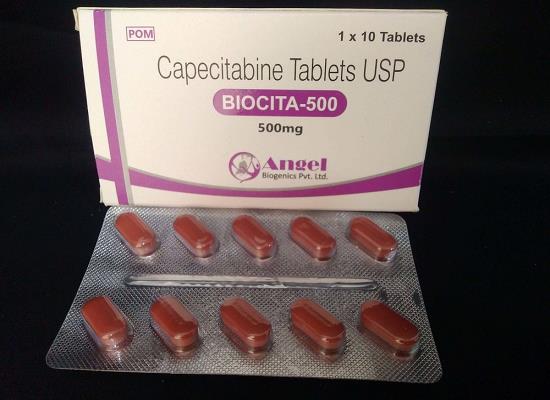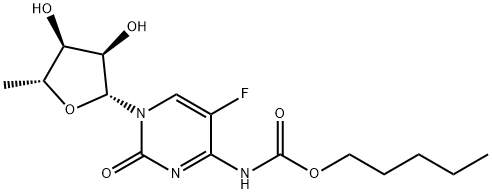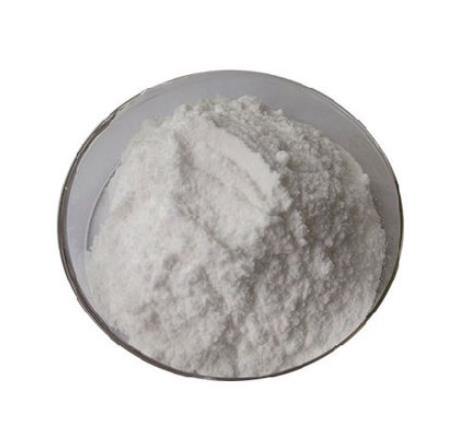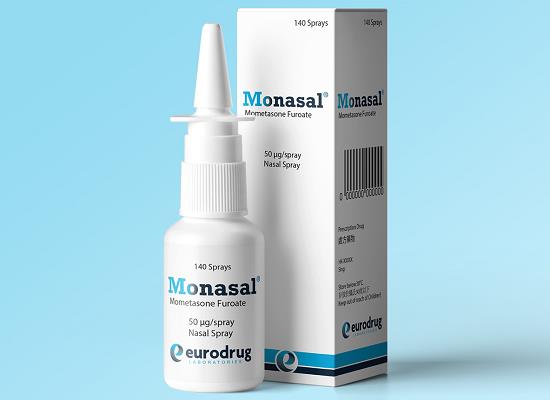Capecitabine for the treatment of pancreatic cancer
General Description
Capecitabine is an oral chemotherapeutic agent used to treat colorectal cancer and breast cancer. It is an alternative to intravenous 5-FU and has shown promising results in treating locally advanced pancreatic cancer when combined with concurrent radiation therapy. Capecitabine is converted into 5-FU through enzymatic reactions, resulting in higher concentrations of 5-FU in cancer cells while sparing normal tissue. Pharmacokinetic studies have shown that capecitabine and its metabolites have a low binding affinity to plasma proteins and are primarily eliminated through urine. Clinical studies have reported a partial response rate of 20% and a stable disease rate of 65% in LAPC patients treated with capecitabine and concurrent radiation therapy. However, further research is needed to establish its efficacy and role in the treatment of LAPC.

Figure 1. Tablets of capecitabine
Pharmacology
Capecitabine is an oral fluoropyrimidine carbamate that is designed to be a more convenient and less toxic alternative to intravenous 5-FU. It is approved by the FDA for the treatment of colorectal cancer and breast cancer, either as a single agent or in combination therapies. It has also shown promise for other tumor types, including pancreatic cancer, as a replacement for 5-FU. Once absorbed through the intestinal wall, capecitabine undergoes three enzymatic reactions to convert it into 5-FU. The final step is catalyzed by thymidine phosphorylase (TP), which is present at higher concentrations in cancer cells compared to normal tissue. This selective targeting of cancer cells allows for higher intratumoral concentrations of 5-FU while sparing systemic toxicities associated with 5-FU. The pharmacokinetics of capecitabine have been extensively studied across various dosages. The levels of its metabolites, particularly 5'-DFCR and 5-FU, increase proportionally to the dose. The half-life of capecitabine and 5-FU is approximately 45 minutes. Peak blood levels are reached around 1.5 hours for capecitabine and 2 hours for 5-FU. Capecitabine and its metabolites have a low binding affinity to plasma proteins, with less than 60% binding and 35% specifically bound to albumin. Metabolism of capecitabine is primarily carried out by dihydropyrimidine dehydrogenase (DPD), resulting in the formation of less toxic catabolites such as FUH2, FUPA, and FBAL. The majority of FBAL is eliminated through urine, while fecal excretion is minimal. Understanding the pharmacology of capecitabine is crucial for optimizing its efficacy and minimizing potential side effects. Further research and clinical studies continue to evaluate its effectiveness in different cancer treatments. 1
Clinical activity in pancreatic cancer
Capecitabine, an oral chemotherapeutic agent, has shown promise as a treatment option for locally advanced pancreatic cancer (LAPC) when combined with concurrent radiation therapy. Traditionally, fluorouracil with concurrent radiation therapy followed by maintenance 5-FU has been the standard therapy for LAPC. However, capecitabine has emerged as an alternative to infusional 5-FU in gastrointestinal malignancies due to its oral administration and synergistic efficacy with XRT. In a phase I study, capecitabine was tested as a radiosensitizer in LAPC patients. The dose of capecitabine ranged from 600 to 1250 mg/m2 twice a day, along with radiation therapy. The study demonstrated the safety of capecitabine, with two out of six patients experiencing grade 3 doselimiting diarrhea. Twenty percent of the patients achieved a partial response. In a subsequent phase II study, 20 patients received concurrent radiation therapy with capecitabine at a dose of 1600 mg/m2 from Monday to Friday for 6 weeks. After completion of initial therapy, patients with stable or responsive disease continued to receive capecitabine. The study reported a 20% partial response rate and a 65% stable disease rate. The 6-month survival rate was 84% and the 1-year survival rate was 58%. It is important to note that level 3 evidence supporting the use of chemoradiotherapy in LAPC is limited. The LAP07 phase 3 randomized trial did not show a significant overall survival benefit with the addition of chemoradiotherapy to gemcitabine in APC patients who had stable disease following induction therapy. In conclusion, capecitabine with concurrent radiation therapy has demonstrated clinical activity in locally advanced pancreatic cancer, with potential for improved local control and survival outcomes. Further research is needed to establish its efficacy and role in the treatment of LAPC. 2
Reference
1. Ishikawa T, Utoh M, Sawada N, et al Tumor selective delivery of 5-fluorouracil by capecitabine, a new oral fluoropyrimidine carbamate, in human cancer xenografts. Biochem Pharmacol. 1998;55 (7):1091–1097.
2. Siddiqui NS, Godara A, Byrne MM, Saif MW. Capecitabine for the treatment of pancreatic cancer. Expert Opin Pharmacother. 2019;20(4):399-409.
);Related articles And Qustion
See also
Lastest Price from Capecitabine manufacturers

US $0.00/KG2024-04-22
- CAS:
- 154361-50-9
- Min. Order:
- 2KG
- Purity:
- USP34
- Supply Ability:
- 20tons

US $0.00/kg2024-04-15
- CAS:
- 154361-50-9
- Min. Order:
- 1kg
- Purity:
- 99%
- Supply Ability:
- 20tons



